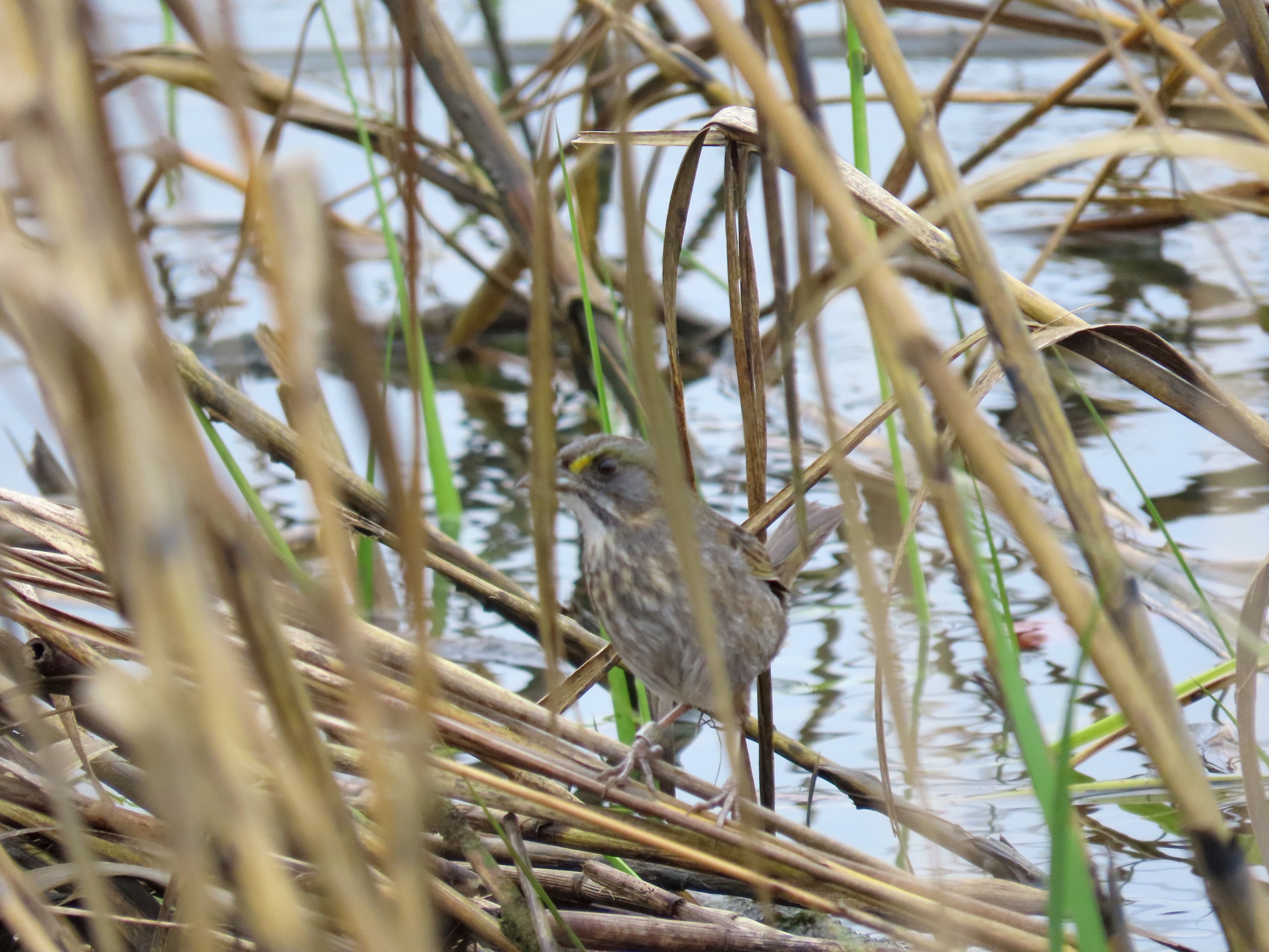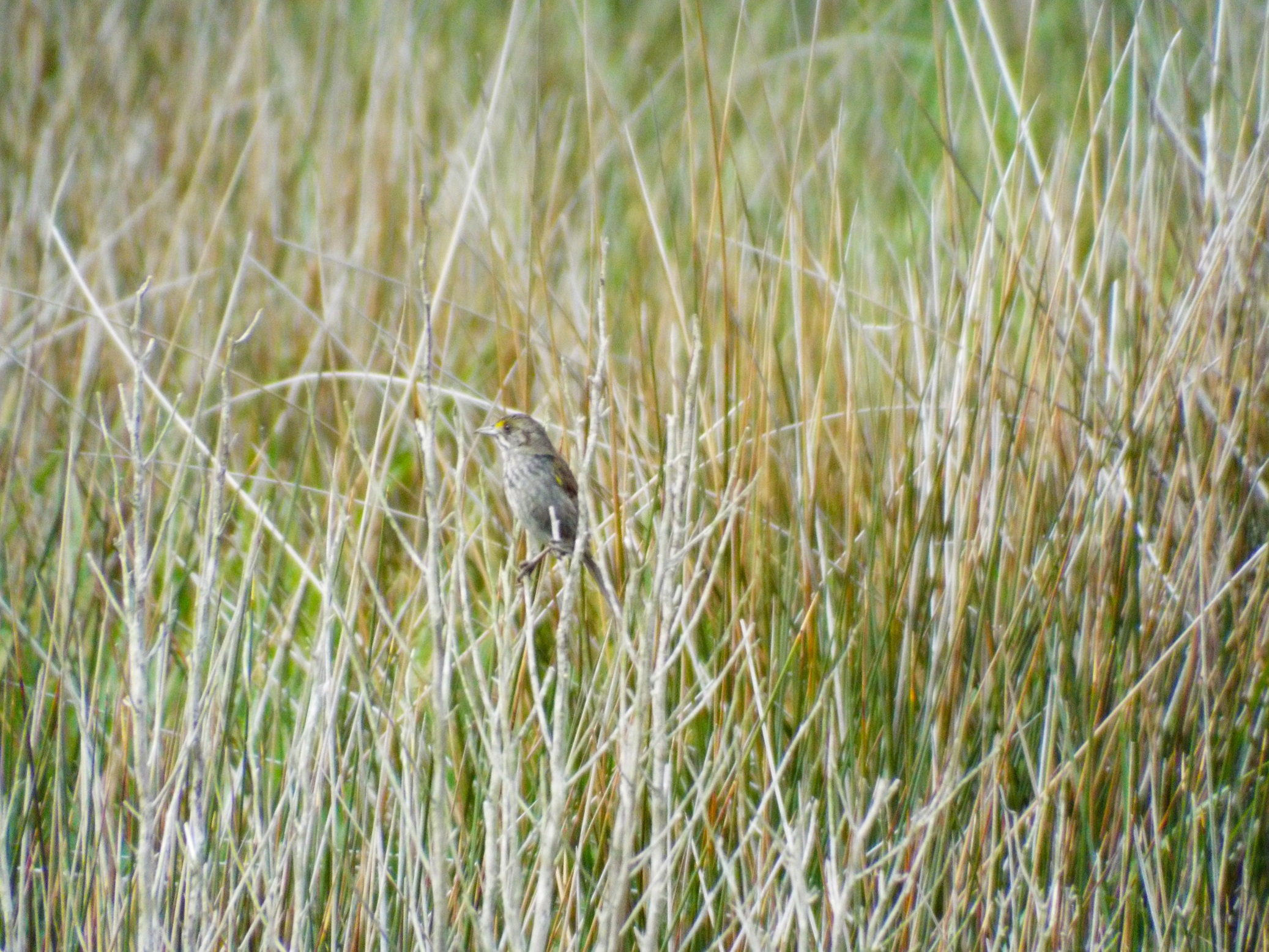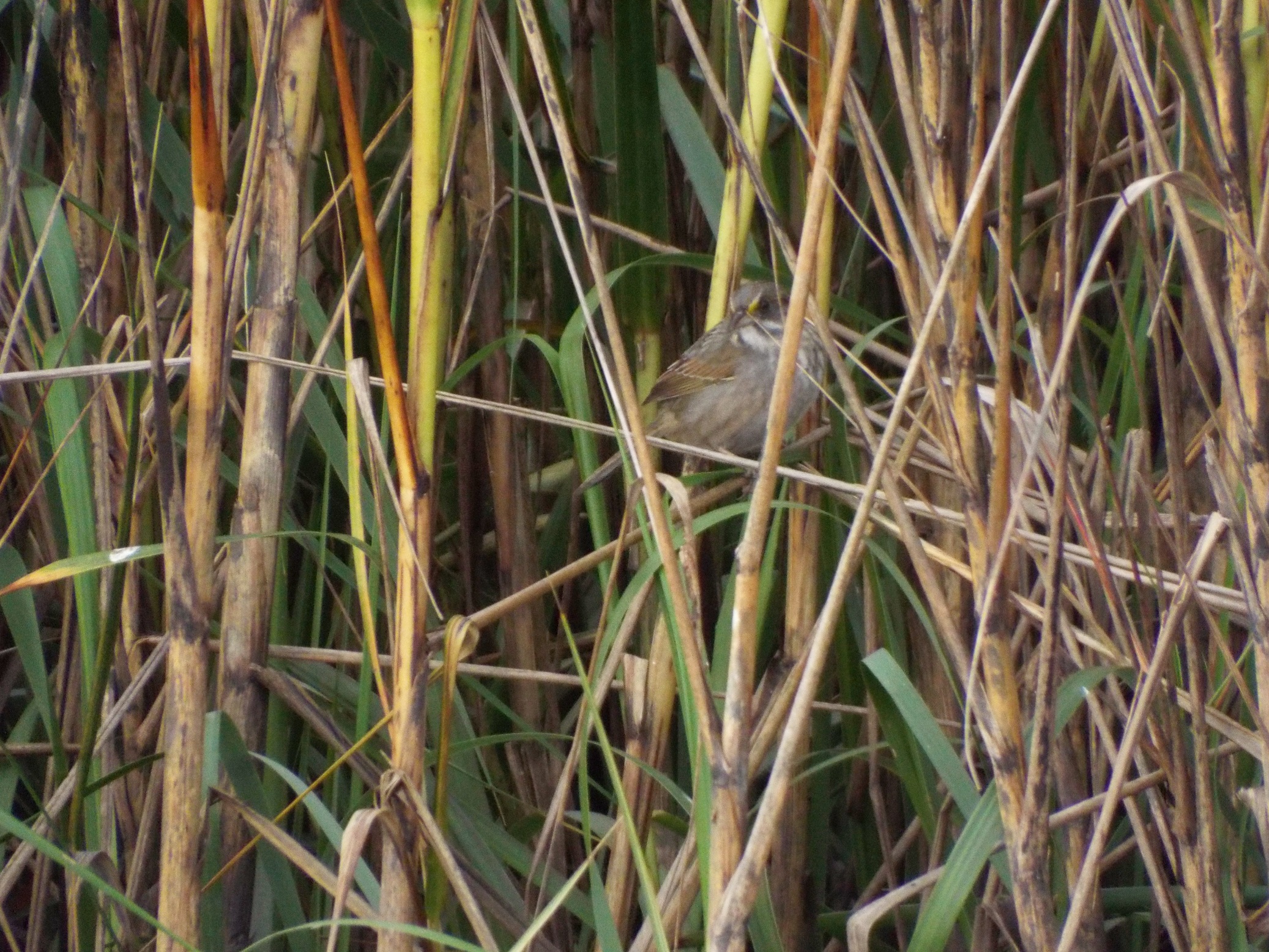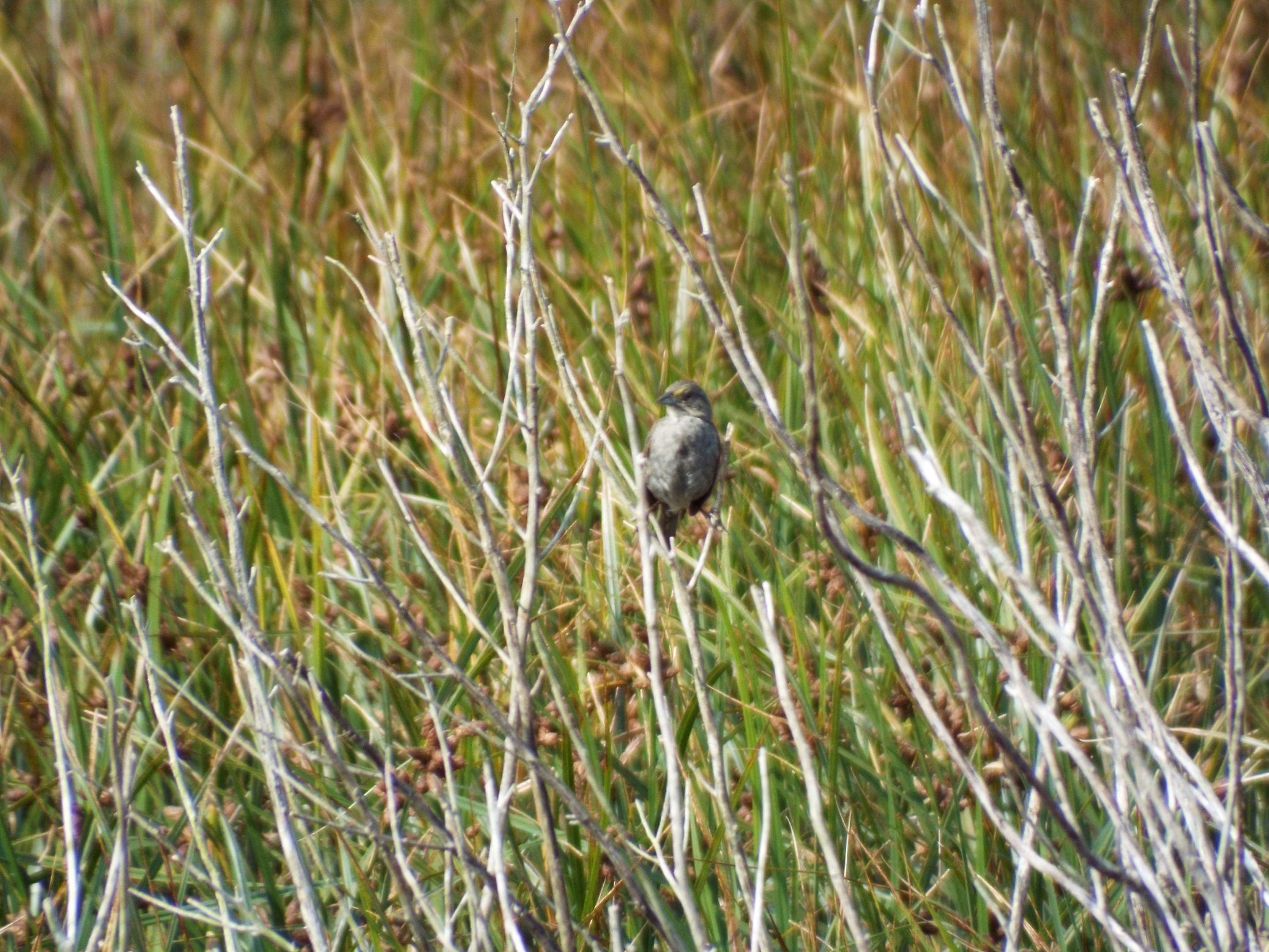




This week for Flora and Fauna Friday it’s the Lowcountry’s local marsh sparrow, the MacGillivray’s Seaside Sparrow (Ammospiza maritima macgillivraii).
Within the winter’s salt marsh the blackbirds linger and grackles gallivant, rails scurry and wrens bound, all beneath the watchful eye of hovering harriers and ospreys. But between them all resides a trio of songbirds, scarcely seen and rarely heard, who call this cordgrass kingdom home, the marsh sparrows: Seaside Sparrow (Ammospiza maritima), Saltmarsh Sparrow (A. caudacuta), and Nelson’s Sparrow (A. nelsoni). Within their ranks one can find a special lineage, the subspecies MacGillivray’s Seaside Sparrow (A. m. macgillivraii), who calls the marshes of the Sea Islands home year-round.
The MacGillivray’s Seaside Sparrow is a large sparrow with a heavy bill and tattered tail that’s dyed in dusky, dark plumage. Soot-stained gray shades its body, dark walnut-brown colors its wings, an occasional chestnut wash livens its breast and flanks, while a white patch under the chin and a lemon-yellow eyebrow add the only sharp contrast to its feathers. Their call is a high metallic “tink” and their song a three-part verse, first a cricket-like chirp, then a lower two note warble, and finished with a dry, trailing buzz. Their vocalizations are made softly and steadily, easily becoming buried in the cacophonous din of a windswept spring marsh, already saturated in blackbird song. MacGillivray’s Seaside Sparrows live their lives within the saline and brackish marshes of South Carolina. There they forage on seeds, insects, and other invertebrates. In spring they head up river to nest in higher, more tidally stable marshlands. In winter, they head towards the coast, to hunker down on marsh islands in the thermal stability by the sea.
Seaside Sparrows, of all subspecies, and the Saltmarsh and Nelson’s Sparrows are facing tremendous pressure. The Saltmarsh Sparrow is currently under review with the US Fish & Wildlife Service for listing under the endangered species act as threatened. The MacGillivray’s subspecies of the Seaside Sparrow was petitioned for listing in 2018, but ultimately not protected. The Dusky subspecies (A. m. nigrescens) of Florida already went extinct in 1987. Historic wetland draining and alteration, ongoing coastal development, more extreme tide cycles, and rising sea levels are squeezing marsh sparrows from all angles to dwindle their populations. Here in South Carolina, all three species overwinter in our salt marshes and rely heavily upon marsh islands and hammocks for refuge during king tides. As seas rise and the number of king tides increases, these marsh islands become ever more critical, and ever more scarce.
This underscores the priceless value of the protection, restoration, and management of tidal wetlands in the Lowcountry of South Carolina for the survival of these three sparrows, as well as every other species that depends upon our estuaries. Protecting marshlands, marsh islands, and the marsh migration spaces abutting them ensures the highest quality marsh habitat will persist into the future. Restoring historically drained or bermed marshlands will improve the condition of marsh migration space and offers the opportunity to create future marsh islands. Smart management and maintenance of existing tidal impoundments, particularly rice impoundments, will provide bastions of stability and refuge during tumultuous times and tides. Although the futures of our marsh sparrows look bleak, we’ve pulled species back from the brink under bleaker circumstances. Here at the Edisto Island Open Land Trust, we’re doing our part, and we’re always looking forward to how we can forge the brightest future we can on Edisto Island, one plan, one person, or one parcel at a time.